Thanks to most supermarkets, you can easily find a plethora of spices that bring Indian dishes to life. Staples like cumin, coriander, turmeric, cloves, cinnamon, cardamom, nutmeg, black pepper, bay leaves, ginger, paprika, and cayenne pepper are usually on the shelves. For more exotic spices, a quick trip to an Indian or Pakistani grocery store or a simple online search will do the trick.
Whole Spices or Jarred Spices?
Whilst not essential buying whole spices can be a smart move, especially when you’re limited on space and resources. Whole spices last longer when stored in cool, dry places away from light. Plus, grinding them fresh right before cooking unlocks an aroma and flavor that pre-ground spices can’t match. You can use a handy electric grinder or go old school with a pestle and mortar.
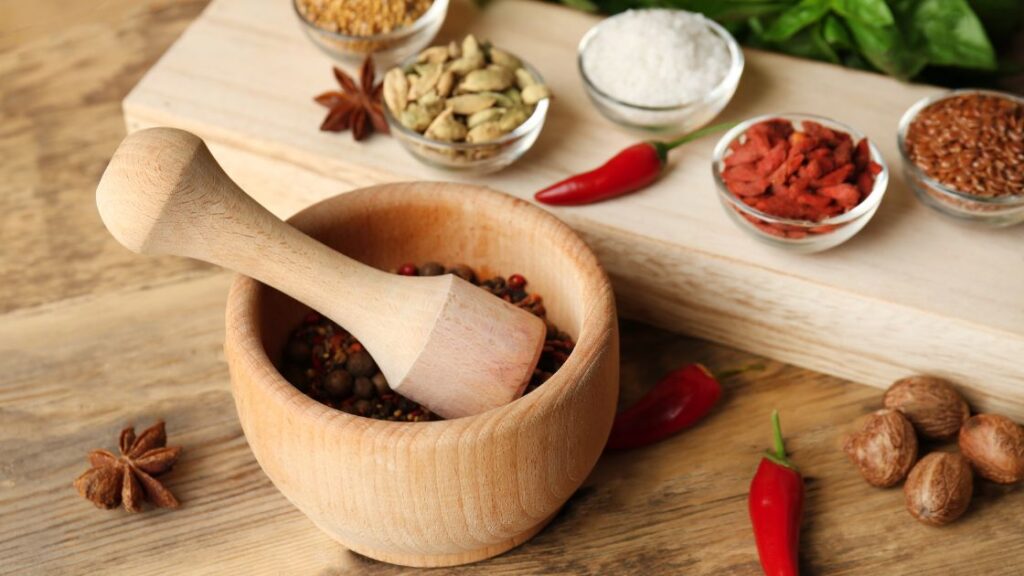
Don’t have a spice grinder or pestle and mortar? There is nothing wrong with jarred herbs and spices at all. We use them often and the taste difference is minimal. However, once the spices are ground down they do tend to lose flavour quickly. Also be aware that jarred herbs and spices do not seem to last that long and its always that day you go to use them that you notice something is out of date!
Remember, when you transfer spices from plastic packets to jars, labeling is crucial. This is especially true for spices bought from ethnic groceries – you don’t want to mistake ground cumin for coriander!
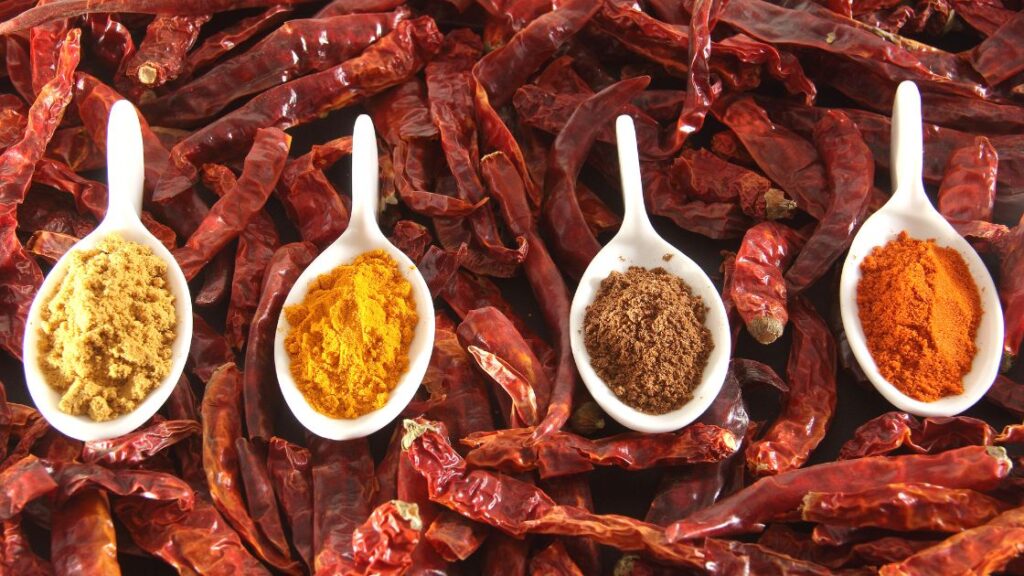
The Four Classic Heroes of Indian Cooking: Cumin, Coriander, Turmeric, and Chili Powder
Indian cuisine, renowned for its vibrant flavors and aromatic spices, often hinges on four key players: cumin, coriander, turmeric, and chili powder. These spices are the foundation of countless Indian dishes, each bringing its unique characteristics to the table. Understanding how to use these “four classic heroes” is essential for any campervan chef looking to infuse their meals with authentic Indian flavors.
1. Cumin: The Flavor Powerhouse
Cumin seeds, known for their distinctive earthy and slightly bitter taste, are a cornerstone in Indian spice blends. This spice brings a depth of flavor that is unmistakable and irreplaceable.
- Usage Tips: Toast the seeds to release their aromatic oils before grinding them into a fine powder. Cumin is versatile – use it in curries, lentil soups, and vegetable dishes. It pairs exceptionally well with pulses and root vegetables.
2. Coriander: The Fresh Balancer
Coriander, often used in its seed form, offers a sweet, floral, and citrusy flavor. It’s the perfect counterbalance to the robustness of cumin and is essential in many spice blends, including garam masala.
- Usage Tips: Like cumin, toasting coriander seeds before grinding them can enhance their flavor. Coriander powder is a staple in marinades, gravies, and vegetable dishes. It’s also sprinkled in at the end of cooking for a burst of fresh flavor.
3. Turmeric: The Golden Healer
Turmeric is famed not just for its culinary uses but also for its medicinal properties. It imparts a warm, mildly aromatic flavor and a characteristic golden hue to dishes.
- Usage Tips: A little goes a long way with turmeric. It’s used primarily for its color and health benefits, so use it sparingly to avoid overpowering other flavors. Turmeric is a staple in almost all curry preparations, lentil dishes, and rice.
4. Chili Powder: The Heat Element
Chili powder adds the quintessential heat that Indian cuisine is famous for. It can range from mildly spicy to intensely hot, depending on the type of chili powder used.
- Usage Tips: Adjust the amount of chili powder according to your heat tolerance. It’s used in curries, meat dishes, and even in some spice-infused drinks. Remember, the heat of chili powder can intensify during cooking, so it’s best to start with less and add more if needed.
These four spices – cumin, coriander, turmeric, and chili powder – form the backbone of many Indian dishes. They each have unique flavors and properties that, when combined, create a symphony of taste. In a campervan kitchen, mastering these spices means you can bring the essence of Indian cuisine to your mobile dining experience. Experiment with these heroes of Indian cooking, and watch as they transform simple ingredients into exotic and flavorful meals.
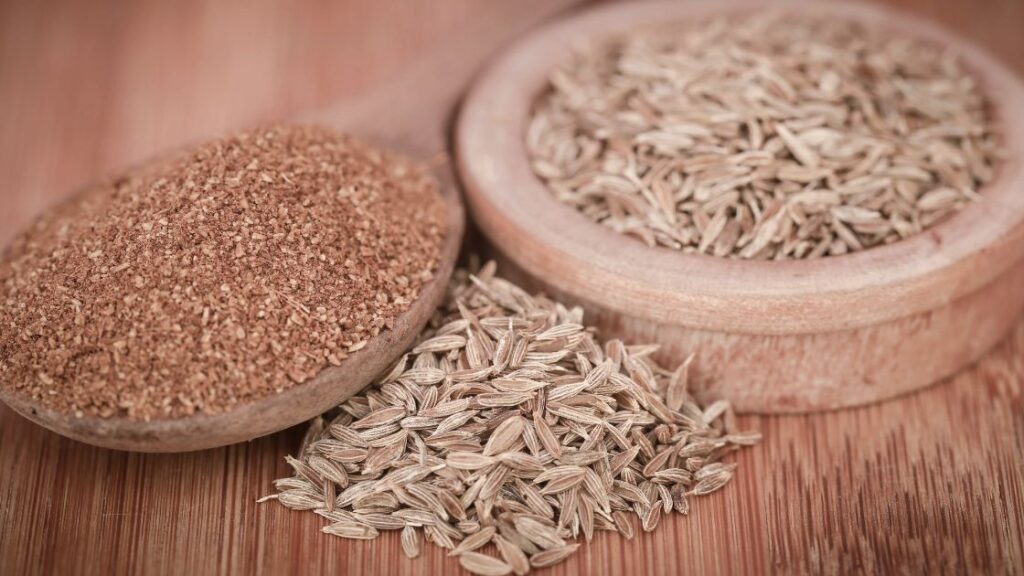
Refining the Balance: Double Coriander to Cumin
In the harmony of spices, coriander often takes a lead role, with cumin providing a supportive base. The 2:1 ratio of coriander to cumin is a classic in Indian cooking, creating a balanced, rounded flavor profile in dishes.
Refined Tips for Using Cumin and Coriander:
- Use Twice as Much Coriander: For every part of cumin, use two parts of coriander. This ratio ensures that the citrusy, sweet notes of coriander soften the intense, earthy flavor of cumin.
- Adjust According to the Dish: While the 2:1 ratio works well in most cases, feel free to tweak it based on the specific requirements of the dish or your personal taste preferences.
- Taste and Adjust: As always, the key to perfect seasoning is tasting and adjusting as you cook. Depending on factors like the freshness of your spices and the other ingredients in your dish, you might find that slightly altering this ratio works better for you.
The 2:1 ratio of coriander to cumin is a tried and true guideline in Indian cooking, offering a well-rounded flavor profile. In your campervan kitchen, embracing this ratio can elevate your cooking, bringing a touch of traditional Indian culinary wisdom to your mobile dining experiences. Remember, cooking is as much an art as it is a science, so don’t hesitate to experiment and find the balance that works best for your palate.
Garlic and Ginger: That deep curry base flavour
Garlic and ginger are more than just ingredients; they’re the deep flavour at the heart of many curry bases. These two components, often used together, are fundamental in creating the depth and complexity that characterizes Indian curries. Their relationship in Indian cuisine is akin to that of salt and pepper in Western cooking – essential and transformative.
Garlic
Garlic, with its pungent and robust flavor, is a cornerstone in Indian cooking. It adds a depth of flavor that is both earthy and aromatic. In curry bases, garlic is often the first layer of flavor, setting the stage for spices and other ingredients.
- Usage Tips: To mellow its intensity and bring out its sweetness, garlic is usually finely chopped or crushed into a paste and then sautéed. It’s important to cook garlic just right – undercooking leaves it raw and overpowering, while overcooking can make it bitter.
Ginger
Ginger offers a sharp, slightly biting flavor with a hint of lemony sweetness. In curries, it complements garlic by adding its own unique deep warmth and zest.
- Usage Tips: Fresh ginger is typically peeled, minced, or grated into a paste. It’s often added to the pan shortly after the garlic, allowing its flavor to meld with the garlic and other spices.
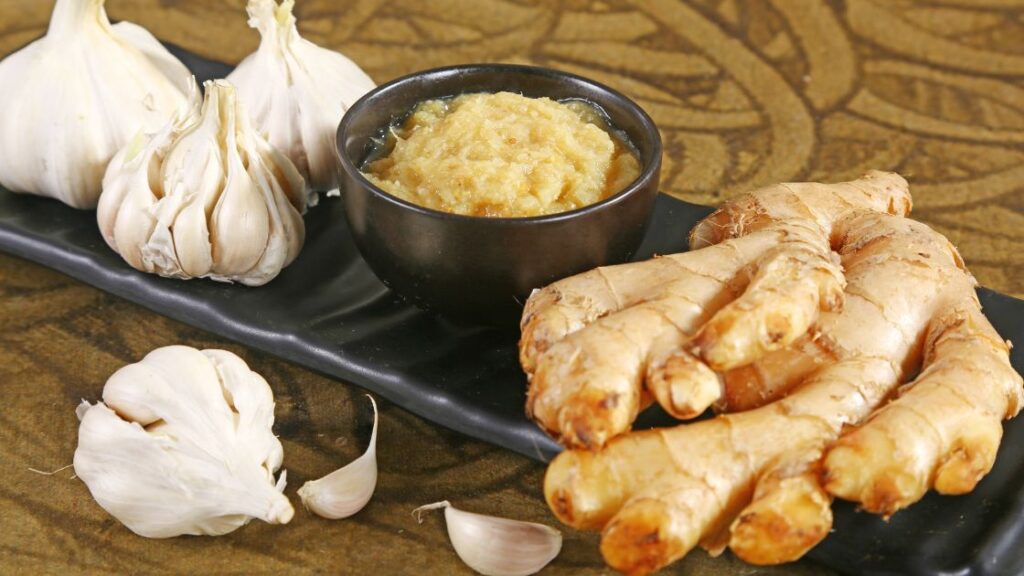
The Garlic-Ginger Paste: A Curry Essential
In many Indian recipes, garlic and ginger are used together in the form of a paste. This paste forms the backbone of numerous curry bases, imparting a rich and layered flavor profile.
- How to Make Garlic-Ginger Paste: Combine equal parts of garlic and ginger with a little water and grind them to a smooth paste. You can make this in bulk and store it in the refrigerator for ease of use.
- Versatility in Use: Garlic-ginger paste is used in marinades, as a base for sautéing onions and spices, and as a flavor enhancer in sauces and gravies. It infuses dishes with a distinctive aroma and taste that is quintessentially Indian.
Garlic and ginger are not just ingredients but the essence of Indian curry bases. They create a harmonious blend that serves as a foundation for building complex flavors. For chefs, mastering the use of this dynamic duo can significantly elevate the quality of their Indian dishes. It allows for an exploration into the depths of Indian culinary traditions, bringing authentic tastes and aromas right into your kitchen. Its imperitive that you do not mask the flavour of the garlic and ginger by adding too much spice to your dish. Experiment with this powerful combination, and discover how they can transform simple ingredients into extraordinary Indian curries.
👇👇👇👇👇 Check out our recipe for the perfect balanced curry base 👇👇👇👇👇

A Closer Look at Some Indian Spices
Asafoetida (Heeng)
This potent resin, traditionally from Afghanistan and Western Kashmir, has a unique smell that has been compared to truffles. It’s a powerful digestive aid used in minuscule amounts. Asafoetida can be a bit hard to find, so feel free to skip it in recipes or buy a small quantity if you do find it.
Cardamom (Elaichi)
Cardamom pods, found in white or green, are treasure chests of aromatic seeds. The white ones are bleached and less flavorful than the green. Use them whole for flavor and aroma, but don’t eat them – they’re like bay leaves.
Cayenne Pepper (Pisi hui lal mirch)
A key ingredient in Indian cooking, cayenne pepper can be adjusted to taste. Kashmiri chili powder is a great alternative with its vibrant color and flavor.
Fresh, Hot, Green Chillies (Hari mirch)
These vitamin-rich chillies add a unique flavor to Indian dishes. If you can’t find them, increase the cayenne pepper slightly in your recipe. Store them unwashed and wrapped in the fridge, and handle with care.
Whole, Dried, Hot, Red Chillies (Sabut lal mirch)
Used for their skin’s flavor, these chillies are fried in oil until they puff up. Be cautious when handling them, and remove seeds if you want less heat.
Cinnamon (Dar cheeni)
Cinnamon sticks are a staple in many meat and rice dishes, used for flavor and not typically consumed.
Cloves, Whole (Long)
Like cinnamon, whole cloves add flavor and aroma to dishes but aren’t meant to be eaten.
Fresh Grated Coconut (Nariyal)
A fresh coconut should be heavy with liquid and crack-free. Use the grated flesh in Indian dishes for a burst of flavor.
Fresh Green Coriander (Hara dhania or kothmir)
A favorite Indian herb, it’s used for both flavor and garnish. Store it in a container with water, like flowers, in the fridge.
Coriander, Seeds and Ground (Dhania, sabut and pisa)
These seeds are widely used in Indian cooking. Freshly ground coriander seeds have a more potent flavor than pre-ground versions.
Cumin, Seeds and Ground (Zeera, sabut and pisa)
A staple in Indian cuisine, cumin is used in both whole and ground forms. Whole seeds retain flavor longer and can be easily ground.
Fennel Seeds (Sonf)
These seeds have a milder, liquorice-like flavor compared to anise seeds. They’re great in meat and vegetable dishes.
Garam Masala
A blend of warming spices like cardamom, cinnamon, cloves, and nutmeg. This mixture adds a final aromatic touch to dishes. Homemade blends often surpass store-bought in flavor.
Ginger, Dried and Fresh
Dried ginger is used in sweet dishes while fresh ginger adds a pungent flavor to many Indian recipes. Fresh ginger should be stored in a cool, airy place or in the fridge.
Mustard Oil (Sarson ka tel)
Distinctly pungent when raw and sweet when heated, mustard oil is used for cooking vegetables and fish, especially in Bengal and Kashmir.
Mustard Seeds, Whole Black (Sarson)
These seeds add a nutty flavor when cooked in oil. They’re a staple in many Indian dishes.
Nigella (Kalonji)
These teardrop-shaped seeds have a unique, earthy aroma and are used in vegetable, fish dishes, and pickling.
Nutmeg (Jaiphal)
Buy whole for the freshest flavor. Nutmeg is soft and easily broken for use in recipes.
Saffron (Zaafraan or kesar)
This expensive spice adds color and aroma to festive dishes. For a cheaper alternative, a pinch of turmeric can substitute, though it lacks the distinct saffron flavor.
Sesame Seeds (Til)
Unhulled sesame seeds, particularly roasted, add a nutty flavor to dishes.
Silver Leaf (Vark)
Used for garnishing sweets and festive dishes, this edible silver tissue should be stored carefully to avoid tarnishing.
Turmeric (Haldi)
A key spice in Indian cooking, turmeric adds color and an earthy flavor. It’s also known for its digestive and antiseptic properties.
Incorporating these spices into your Indian cooking routine can transform simple ingredients into vibrant, flavor-packed dishes. Remember, the key is to start with small quantities and adjust to your taste. So, fire up that campervan stove and let the magic of Indian spices elevate your meals to a whole new level!


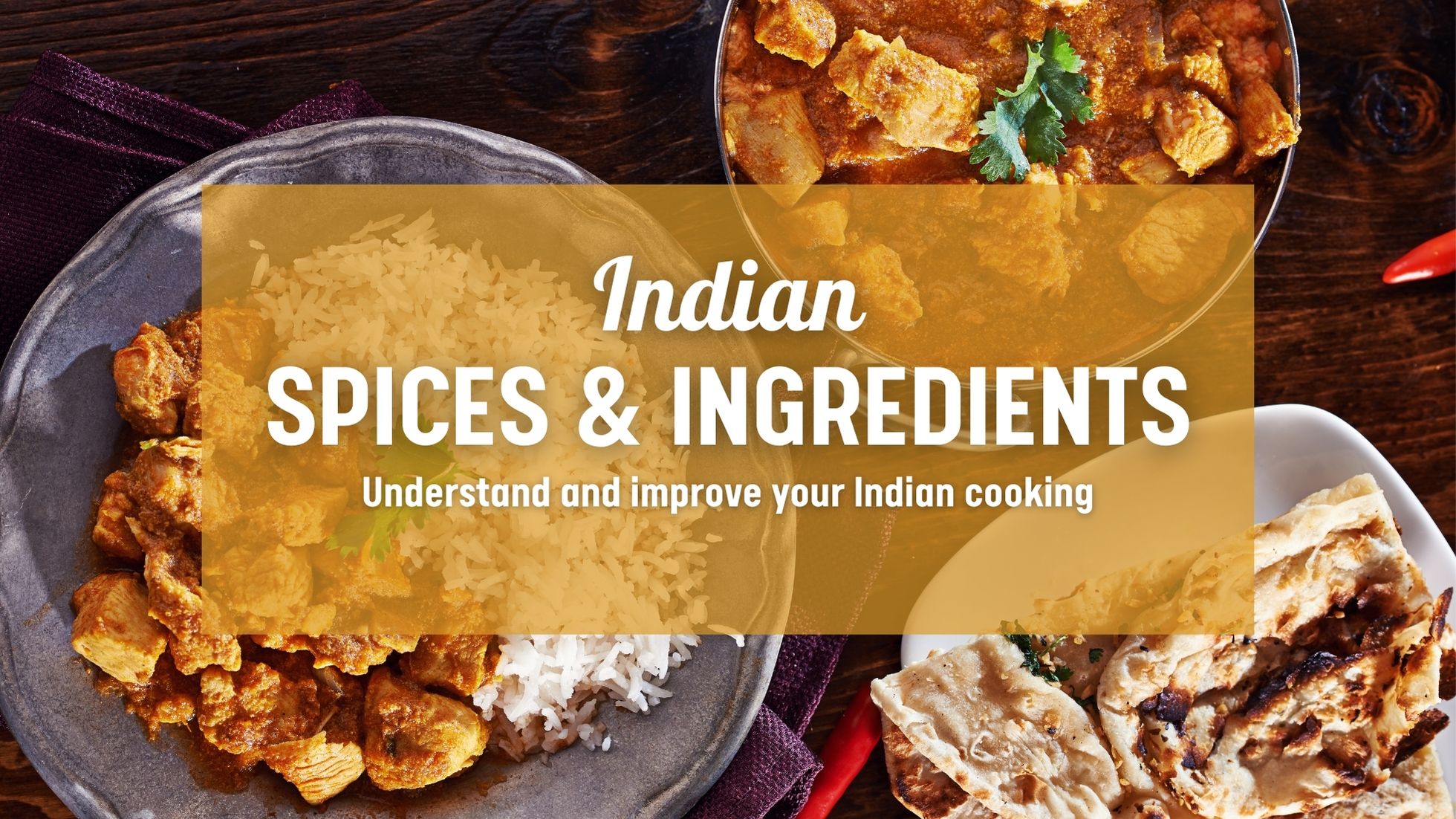


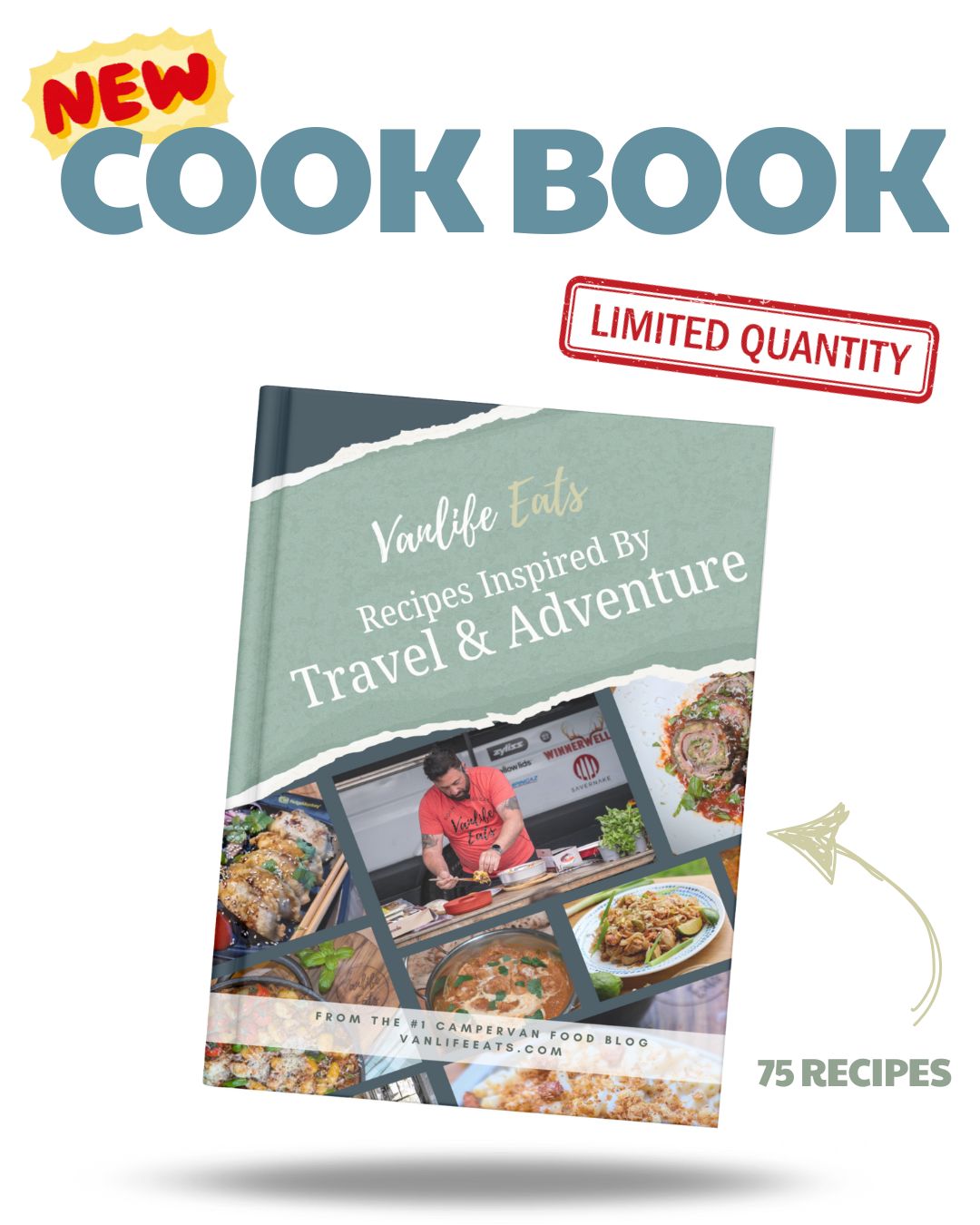

0 Comments